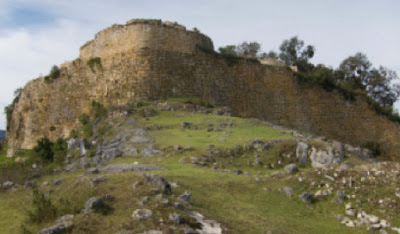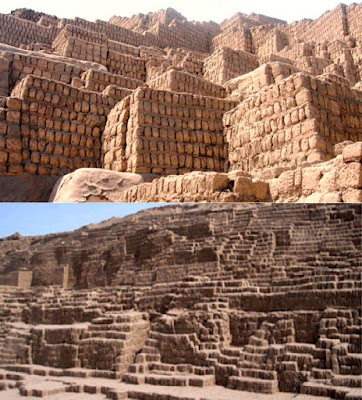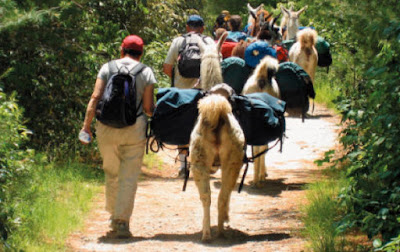The
Jaredites did dig it out of the Earth
This was in the days of Lib, who was the 17th generation from Jared (Ether 1:17-18), about in the middle of the Jaredite period, making the year around 1300 B.C., whether they were working metal before that it is not known, but one can surmise that they were, since Moroni’s statement suggests prior knowledge of metallurgy before the time of Lib.
Of course, this continued with the Nephites, when Nephi tells us that either knew how or was going “to make tools to construct his ship” (1 Nephi 17:9), and then later tells us that he taught his people “to build buildings, and to work in all manner of wood, and of iron, and of copper, and of brass, and of steel, and of gold, and of silver, and of precious ores, which were in great abundance” (2 Nephi 5:15), which was around 580 B.C. Later, Jarom added, “fine workmanship of wood, in buildings, and in machinery, and also in iron and copper, and brass and steel, making all manner of tools of every kind” (Jarom 1:8), around 399 B.C., and about 240 years later, they are still working in metal (Mosiah 11:3, 8). We find this tradition still in full swing over two hundred years later with the Nephites “in the north and in the south” (Helaman 6:11). Consequently, for at least a two thousand year period, metallurgy was being worked in the Land of Promise, from 1300 to 25 B.C., and obviously later.
Left: Very
early breastplate made binding gold plates together; Right: Hammered gold into
writing sheets
It would seem obvious that in the Land of Promise one should
find evidence of metallurgy dating back to at least 3300 years ago, and worked
from at least 1300 B.C. forward. However, this is not the case in Mesoamerica,
where metallurgy dates no earlier than 600 A.D. (two hundred years after the
demise of the Nephites), and as much as 900 A.D., depending on which
archaeologist you encounter.
John L. Sorenson, in his book An Ancient American Setting for the Book of Mormon (1985, p278), states: “Critics of the Book of Mormon have been fond of pointing out that statements in the scripture regarding use of metals by the Nephites and Jaredites run contrary to authoritative pronouncements on the subject by experts.” However, that statement is for Mesoamerica only—not for South America where numerous studies have shown metallurgy dating far back into B.C. times.
Sorenson then goes on to claim an earliest date of 600 B.C., inferring that this date is probably closer to the first century B.C. Yet, three years after his statement, Dorothy Hosler (above) in “Ancient West Mexican Metallurgy: South and Central American Origins and West Mexican Transformations,” American Anthropologist 90 (1988, pp832-855) stated that “The emergence of metallurgy in pre-Columbia Mesoamerica occurred relatively late in the region's history, with distinctive works of metal apparent in West Mexico by roughly AD 800, and perhaps as early as AD 600,” and again in 2009: “West Mexican Metallurgy: Revisited and Revised.” Journal of World Prehistory 22 (3): pp.185–212.
Scott E. Simmons and Aaron N. Shugar in a research paper entitled “Archaeometallurgy in Ancient Mesoamerica, quoting from 117 professionals in the field of Metals in Antiquity and in Mesoamerica, with 90 of them written and published after Sorenson’s statement and several as late as just 6 years ago in 2009, all showing no earlier date for metallurgy in Mesoamerica than Classic Times 300-900 A.D.
After 11 pages in his book (p278-288), Sorenson concludes with: “The conventional scientific view about the role of metal in Mesoamerica, and particularly about its date, is in the process of major change. Scholarly developments on the topic in the coming decade will be worth watching.” Well, as shown above, scholarly work on the subject has been reporting the same basic information about no metallurgy in Mesoamerica during Jaredite times, and a possible overlap of 100 years in Nephite times, though more likely after Nephite times since a period quoted covers 700 years. That is, Scholarly work on metal in Mesoamerica over the next twenty-five years after Sorenson’s book has turned up no changes at all in dates, and obviously has not been worth watching whatever.
On the other hand, according to Jamie Turner, in “The
History of Metallurgy in Mesoamerica,” Physical
Science, (2015) states: “Metalworking in South America dates back to at
least 1936 B.C.,” while adding that “Archeological excavations in Mesoamerica
have found evidence for the use of smelting, casting, and alloying of metals
starting in the Late Post classic period around 800A.D.,” and stating that:
“From 800-1300 A.D. Mesoamerican metallurgy shared many common traits with
Peru,” suggesting, of course, that it started much earlier in Peru and eventually moved northward into Mesoamerica.
Monette Bebow-Reinhard, who has compiled the largest database of copper artifacts ever found, in “Mesoamerican Copper-An Industry of Connections,” (2013) states that “Mexico was a latecomer to the copper industry.” In fact, copper tooling suggests that South America began using copper in 2155 B.C., while Mexico is dated between 200 B.C. and 500 A.D.
In addition, according to Aldenderfer, Speakman, and
Popelka-Filcoff, in the Proceedings of the National Academy of Sciences of
the United States of America, in their report “Four-thousand-year-old gold
artifacts from the Lake Titicaca basin, southern Peru, claim that “South
American metal working seems to have developed in the Andean region of modern
Peru, Bolivia and Chile,” with gold and copper being hammered and shaped into
intricate objects, particularly ornaments.”
In fact, it is widely reported that the metallurgy of the Andes outclassed most Old World accomplishments, using skills and techniques not known in the Old World until long after the period of use in America. Recent finds show that the Andean people were smelting copper for over a thousand years before the Spaniards arrived. Even today, according to the GSA (Geological Society of America), Peru is the leading producer of gold in Latin America, and the world's leading producer of silver, the world's second leading producer of copper, behind Chile, which produces five times more than any other country, and one-third of the world copper.
“The Andes represent the largest source of mineral wealth in the Americas and the birthplace of New World metallurgy, appearing millennia prior to colonial contact
On the other hand, the emergence of metallurgy in pre-Columbian Mesoamerica "occurred relatively late in the region's history," with distinctive works of metal apparent in west Mexico by roughly 800 A.D., and perhaps as early as 600 A.D., and that in Guatemala even later, basically around 900 A.D. In fact, metallurgy in Mesoamerica is reported to have developed from contacts with South America.
North American
metallurgy also dates to the later A.D. periods, and according to Rapp, Gibbon
and Ames in Archaeology of Prehistoric Native America, “Archaeological
evidence has not revealed metal smelting or alloying of metals by pre-Columbian
indigenous peoples north of the Rio Grande; however, they did use native copper
extensively. Neither of these two areas, obviously, qualify for the Book of
Mormon Land of Promise, as does Andean South America.
(See the next post, “Finding Lehi’s Isle of Promise – Part XXIII,” for more of Mormon’s statements that lead us to a clearer understanding of the location of the Land of Promise)
John L. Sorenson, in his book An Ancient American Setting for the Book of Mormon (1985, p278), states: “Critics of the Book of Mormon have been fond of pointing out that statements in the scripture regarding use of metals by the Nephites and Jaredites run contrary to authoritative pronouncements on the subject by experts.” However, that statement is for Mesoamerica only—not for South America where numerous studies have shown metallurgy dating far back into B.C. times.
Sorenson then goes on to claim an earliest date of 600 B.C., inferring that this date is probably closer to the first century B.C. Yet, three years after his statement, Dorothy Hosler (above) in “Ancient West Mexican Metallurgy: South and Central American Origins and West Mexican Transformations,” American Anthropologist 90 (1988, pp832-855) stated that “The emergence of metallurgy in pre-Columbia Mesoamerica occurred relatively late in the region's history, with distinctive works of metal apparent in West Mexico by roughly AD 800, and perhaps as early as AD 600,” and again in 2009: “West Mexican Metallurgy: Revisited and Revised.” Journal of World Prehistory 22 (3): pp.185–212.
Scott E. Simmons and Aaron N. Shugar in a research paper entitled “Archaeometallurgy in Ancient Mesoamerica, quoting from 117 professionals in the field of Metals in Antiquity and in Mesoamerica, with 90 of them written and published after Sorenson’s statement and several as late as just 6 years ago in 2009, all showing no earlier date for metallurgy in Mesoamerica than Classic Times 300-900 A.D.
After 11 pages in his book (p278-288), Sorenson concludes with: “The conventional scientific view about the role of metal in Mesoamerica, and particularly about its date, is in the process of major change. Scholarly developments on the topic in the coming decade will be worth watching.” Well, as shown above, scholarly work on the subject has been reporting the same basic information about no metallurgy in Mesoamerica during Jaredite times, and a possible overlap of 100 years in Nephite times, though more likely after Nephite times since a period quoted covers 700 years. That is, Scholarly work on metal in Mesoamerica over the next twenty-five years after Sorenson’s book has turned up no changes at all in dates, and obviously has not been worth watching whatever.
Scott E. Simmons and Aaron N. Shugar: Top: (p2)
table showing no metallurgy found in the Maya Lowlands, Maya Highlands, Basin
of Mexcico and West Mexico until after 900 A.D., covering a period from 2000
B.C. to 1800s A.D.; Bottom: (p3) The area of (Red Arrow) West Mexico where
metallurgy has been found after 600 to 900 A.D.; the area (Blue Arrow) of
Guatemala where metallurgy has been found after 900 A.D. (along the border with
Honduras)
Monette Bebow-Reinhard, who has compiled the largest database of copper artifacts ever found, in “Mesoamerican Copper-An Industry of Connections,” (2013) states that “Mexico was a latecomer to the copper industry.” In fact, copper tooling suggests that South America began using copper in 2155 B.C., while Mexico is dated between 200 B.C. and 500 A.D.
Top 2 Rows: Ceremonial knives, such as those
above (lower left) were plentiful around 300 B.C. along the Peruvian coast;
also ceremonial masks were very common in the ground throughout Peru; Bottom
Row: Left: An intricately worked gold piece dating to
about 100 A.D., was discovered in Peru at the base of an eroded mud-brick
pyramid. Other items were 19 golden headdresses, various pieces of jewelry, and
two funerary masks; Center/Right: Chavin metal work dating to the last
millennia B.C.
In fact, it is widely reported that the metallurgy of the Andes outclassed most Old World accomplishments, using skills and techniques not known in the Old World until long after the period of use in America. Recent finds show that the Andean people were smelting copper for over a thousand years before the Spaniards arrived. Even today, according to the GSA (Geological Society of America), Peru is the leading producer of gold in Latin America, and the world's leading producer of silver, the world's second leading producer of copper, behind Chile, which produces five times more than any other country, and one-third of the world copper.
“The Andes represent the largest source of mineral wealth in the Americas and the birthplace of New World metallurgy, appearing millennia prior to colonial contact
On the other hand, the emergence of metallurgy in pre-Columbian Mesoamerica "occurred relatively late in the region's history," with distinctive works of metal apparent in west Mexico by roughly 800 A.D., and perhaps as early as 600 A.D., and that in Guatemala even later, basically around 900 A.D. In fact, metallurgy in Mesoamerica is reported to have developed from contacts with South America.
This boat route demonstrates how South America had contact with West Mexico, far more likely than coming up by land because these types of tools are completely absent from southern Mexico through Nicaragua between 200 and 600 A.D. Valentini wrote about copper in the lat 1800s, and confessed he had never seen a bronze Mexican artifact; he only assumed they existed
(See the next post, “Finding Lehi’s Isle of Promise – Part XXIII,” for more of Mormon’s statements that lead us to a clearer understanding of the location of the Land of Promise)



































